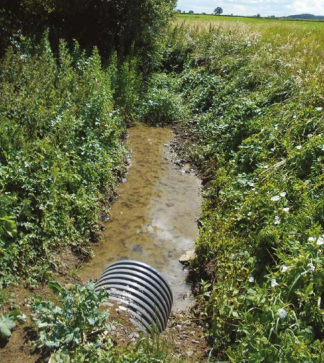- Home
- Knowledge library
- Earlier turnout from better drainage
Earlier turnout from better drainage
Well-drained soils lead to earlier turnout, more grazing days and higher grass yields. After a year of weather extremes, walking the platform this winter to see where it lies wet and analysing grass-growth records from underperforming paddocks will help locate any drainage issues.
Poorly drained fields are susceptible to poaching and surface run-off. Furthermore, they limit rainfall percolation into the soil and are vulnerable to drought, says drainage contractor Rob Burtonshaw of Farm Services. Waterlogged soils are also cold and slower to get going in spring, whereas well-drained land helps to warm up soils and stimulate grass growth, giving roots better access to water, oxygen and nitrogen. Better grass root development then allows the plant to survive drought. “The theory is that crops can put their roots down deeper on drained land, to tap into water, so when a drought hits, they perform better,” Rob explains.
“To identify a drainage problem, look at where water hangs around in paddocks and note when. As drainage is a large investment (starting at £1000/acre, depending on the design and backfill needed), try to reseed with better grass species and improve soil structure, and be sure that the problem is a drainage issue, rather than a soil structure one, like compaction.”
Rob says that any compaction can be rectified by subsoiling: the faster that water goes down the soil profile, the better. Heavy land might be very fertile, he adds, but it doesn’t encourage infiltration rates and needs some help from drainage.
“Clear roots from pipes, jet blocked drains and replace broken ones. Getting an old drainage scheme running again will certainly improve grass yields and help the soil. It creates less wear and tear on the ground and gives it more chance to recover.”
Drainage schemes remove surplus water from the soil. Benefits include:
- Reduced damage to soil structure
- Quicker sward recovery
- Extra days of grazing
- Better for the environment
- Climate resilience, dealing with flood or drought
- Fewer weed species
- Higher yields of grass
- Earlier turnout
For more information, see AHDB Field drainage guide.

Topics:
Sectors:
Tags:

